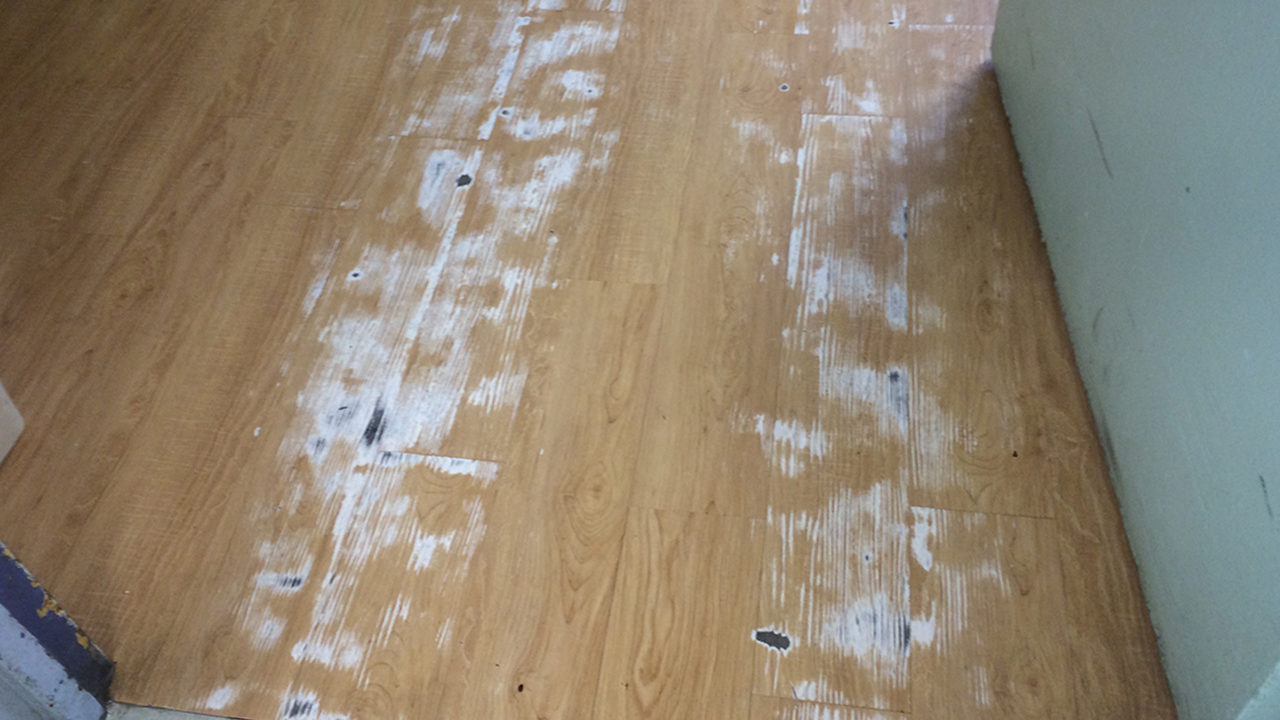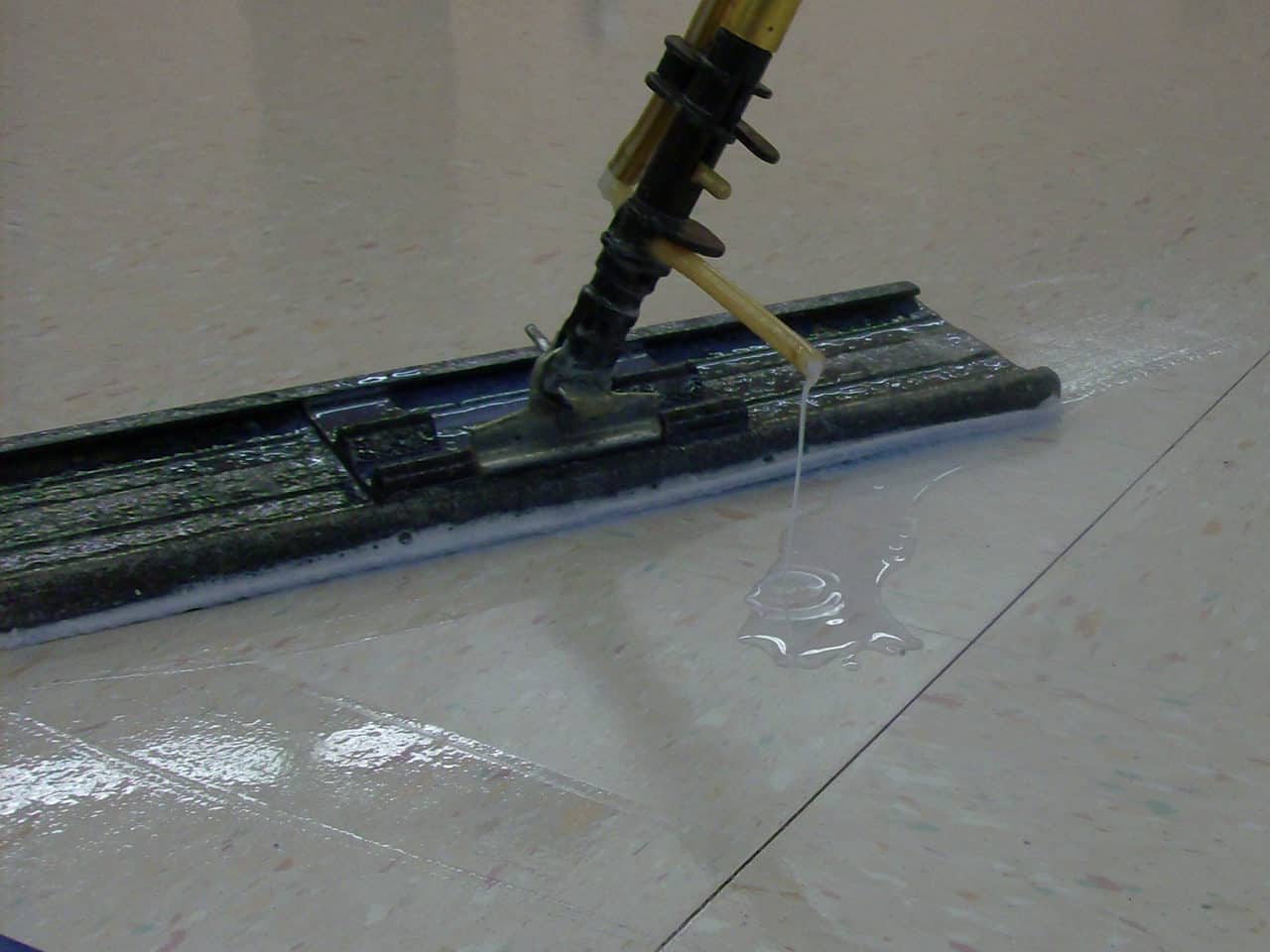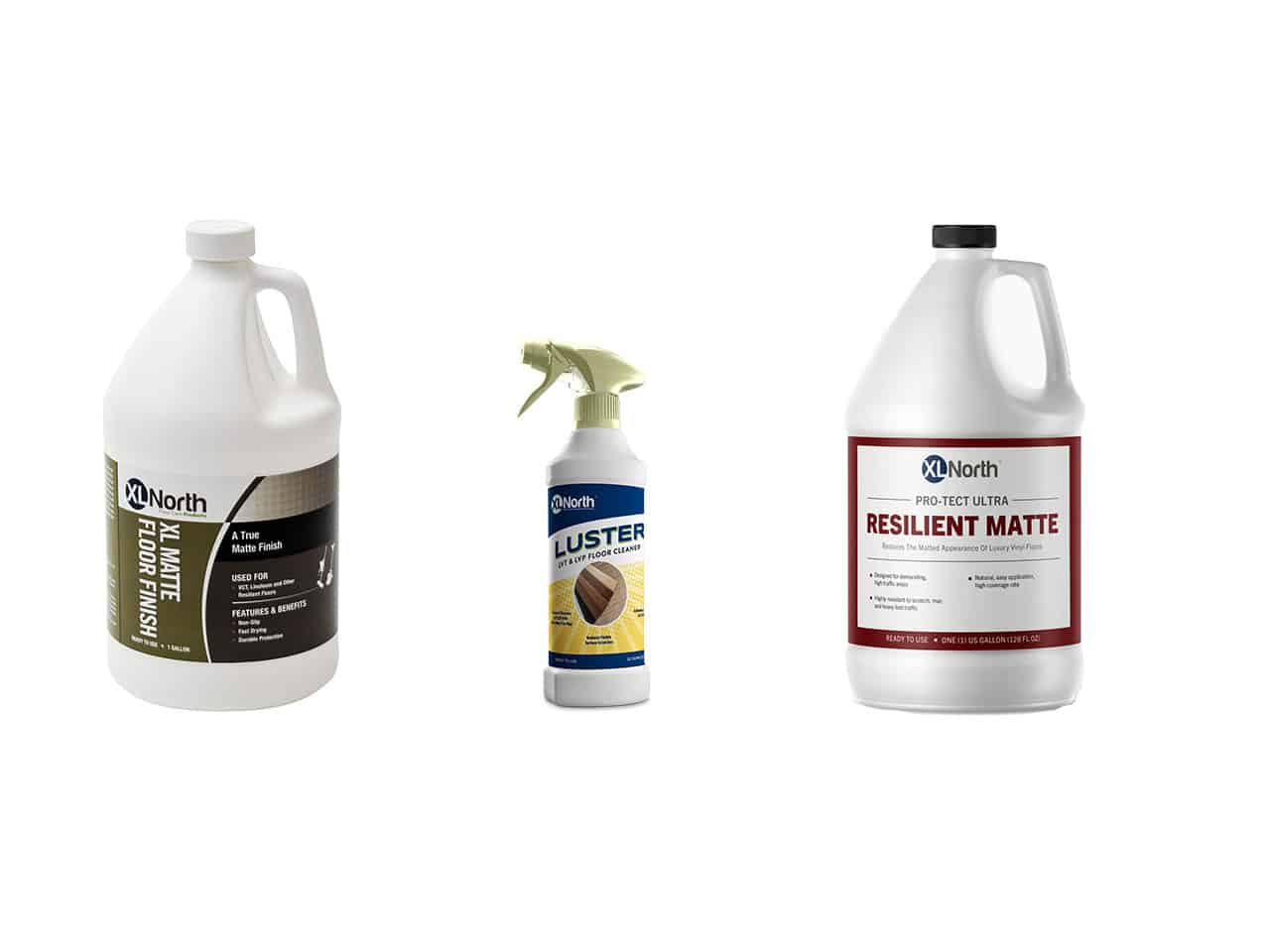We asked two flooring industry heavyweights – one from the maintenance side, one from manufacturing – how to determine when maintenance on resilient floors is a hopeless cause.
Steve Starcher

Steve Starcher, Franchise Business Manager of MilliCare, describes three resilient situations where restoration may prove useless. He also explains how to approach customers that insist upon maintenance over new installation.
Unfortunately there are times in the life of serving customers in the flooring maintenance industry that we have to tell them that there is a good reason not to attempt a restorative cleaning procedure. While it is a hard decision to walk away from the business, one must consider that being honest with a potential customer can establish credibility for your company, and therefore lead to future business with a particular client. An attempt to provide a restoration service that goes wrong or fails to produce any acceptable results to a customer can obviously produce the strain of financial loss, but more importantly, can tarnish your reputation as a professional or an expert in the field.
Below are three situations that may force you to walk away from a potential job.
- The product is heavily scratched, worn, pitted, gouged, or otherwise physically damaged severely enough over a large enough area that any type of restorative cleaning service cannot effectively remove trapped dirt or soils to produce an acceptable appearance. When this occurs it is also likely that the product exhibits a poor or dull visual appearance in which normal lighting produces a gray, shadowy look that cannot be corrected with any sealer or finish application.
Examples:- An unwise installation of a resilient product in an aggressive traffic environment.
- An overly aggressive or ill-advised scrubbing, buffing or burnishing action.
- A one-time or periodic accident or abusive action such as dragging of heavy objects.
- Use of inappropriate furniture or contents or poor protection of furniture legs or feet on a product.
- The absence of required sealer or finish application.
- The product has discolored or lost color due to a drastic reaction to contact with a chemical, or a tracked on, spilled, or leaked substance or solution.
Examples:- Yellowing from asphalt walk off or petroleum based products from normal traffic.
- Cleaning applications with bleaches, ammoniated products or other high or low pH products.
- Harsh lighting or off gassing occurring in the environment.
- Transfer of dye or dyes from cleaning products, inadvertent spills or foot traffic.
- Discoloration from plasticizer migration coming from materials or mats placed on top of a resilient product.
- Discoloration, such as rust marks, transferring from metals or materials that have corroded where they make contact with a floor.
- The product’s current state of installation is poor and any cleaning mechanical action or cleaning solution application may worsen the installation or not be possible to be performed safely.
Examples:- An installed product is no longer bonded to a floor.
- Welds in sheet goods are missing.
- Concrete subfloor is unstable.
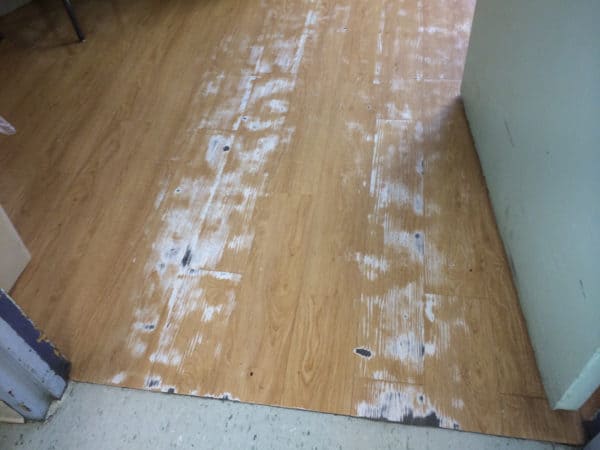
How you handle any of these scenarios can be critical to maintaining a viable relationship with a current or potential customer. If pressed by a customer to attempt a restoration service when the outlook is bleak, here are some potential options:
- Perform a small area demonstration of the results. Ask the customer to cover your cost of a test service. Do not set any expectations and review the results with the customer afterwards. Some companies may choose to pay you to confirm that they need to replace a certain resilient flooring material, especially if they have to report to an owner, manager, or third party.
- Make a friend and refer the customer to a reliable installation company for the installation of a new floor. A good reference can be just as valuable to you as a performing a good service.
- If you feel that an acceptable result is possible but you are certain that the customer may balk at your price, go ahead and present a proposal based upon the worst case scenario of labor and material cost with best profit conditions, but do not provide any guarantees. Sometimes a customer may use this proposal to weigh this number against the cost of replacement and in delivering this info you have still provided a service to your customer. Should your customer surprise you and ask you to provide the service, still attempt to perform the test area as mentioned above, and never set expectations that may not be able to be delivered. A test service can often also help you acquire the needed production info to set a fair price, and I have had success performing a test service before providing a quote in order to make sure that the job is not quoted too low.
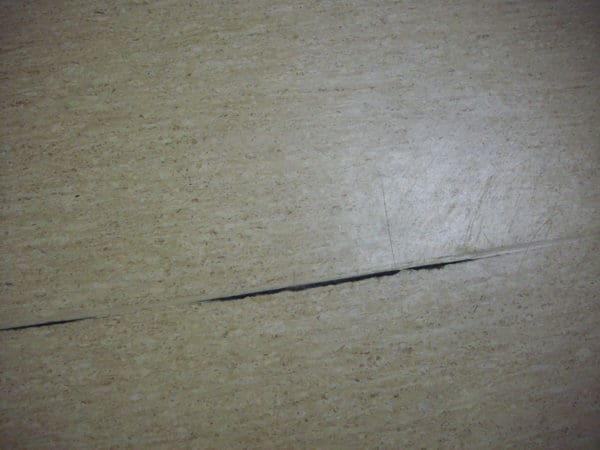
Don Styka

Don Styka, Director of Field Services at Tarkett, discusses how best to assess a resilient flooring issue and outlines the factors associated with determining the proper course of action to fix the floor.
When asking the question “When is resilient flooring beyond corrective procedures?”, it’s important to assess the situation and help the customer determine their best course of action. First, I believe you should identify the cause of the problem. Is it related to damage, improper maintenance, excessive traffic or wear, or some other condition? Secondly, the age and overall condition of the flooring should be included in the evaluation. These factors will be beneficial to the customer who will have to determine what they are willing to spend on the corrective action versus investing in a new replacement floor.
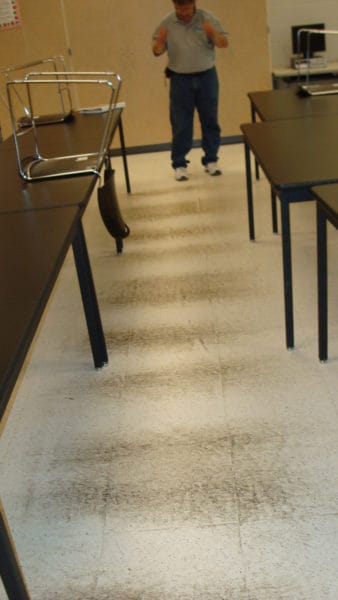
If the floor condition is the result of damage, it’s important to determine the cause of the damage. If the damage is a one-time occurrence related to moving furniture, dragging something across the floor, a spill, or other activity that caused the problem – this might be correctable with a restorative maintenance procedure or a replacement of a small area of flooring.
If the condition is the result of continued abuse and has worsened over time, I suggest you determine if the flooring is appropriate for the type and amount of traffic in the facility and that a suitable maintenance routine was in place.
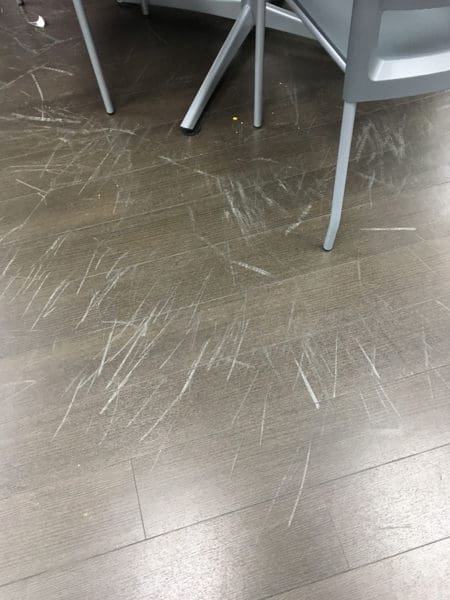
Once the situation is evaluated and the problem and/or contributing factors are identified, corrective options can be considered along with the potential costs of the remediation, keeping in mind that there could be more than one viable solution or option. The time involved and the resources needed, including labor and material cost, can vary drastically based on the method used to resolve the problem. The total cost and time required to correct the problem along with the amount of disruption in the customer’s facility are all factors that should be included in proposed options to the customer. As a professional service provider, your knowledge, experience, and capabilities are a valuable resource for the customer and could factor greatly into the customers decision on how they prefer to address the situation.
As part of the remediation discussion with the customer, I believe it’s always beneficial to perform a small test area for several reasons:
- Determine if the process will be successful
- Identify the resources required to perform the work
- Provide an accurate quote to perform the work
- and most importantly – Establish the benchmark to meet the customer expectations
I believe it’s a good practice to consult with your installation division when damage has occurred or replacement is a strong viable option. You can leverage their expertise and be a consultant and advisor to your customer when you consult with the installation group and review the options for repair or replacement of the damaged flooring prior to presenting options to the customer.
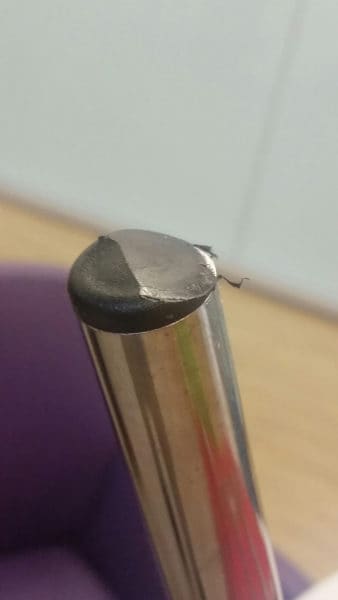
If you are not connected to an installation division in your company, I suggest you partner with a local flooring contractor who can assist you in corrective option situations, or when your technicians come across areas that require repair during normal routine maintenance.
Many good technicians note areas on service reports that include things such as damaged seams, loose flooring, staining, etc. As a resource to your customers and a way to differentiate yourself from the competition trying to underbid your contract, you can be proactive and help resolve many of these types of problems before they escalate, become safety concerns, or increase in cost of remediation to your customers.
